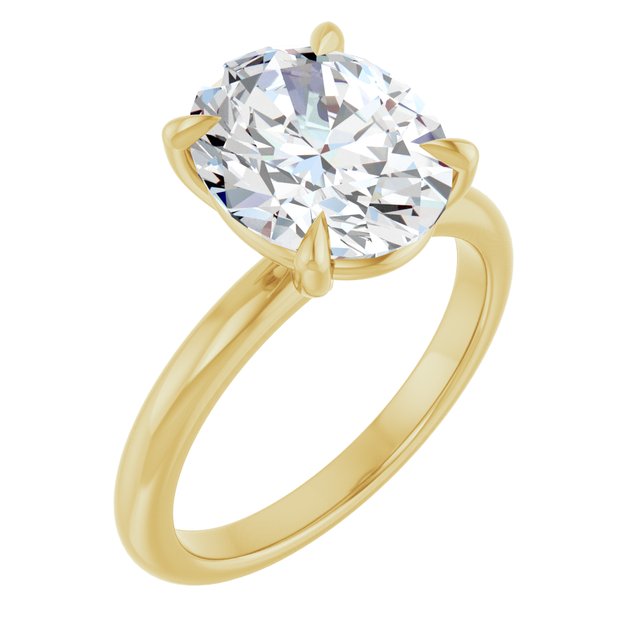What Is a Conflict-Free Diamond?
When you hear the phrase conflict-free diamond, you're hearing a promise—one that ensures your diamond hasn’t funded violence or human suffering. In an age where conscious consumerism is on the rise, understanding where your diamond comes from is just as important as how it sparkles. Let’s explore what makes a diamond truly conflict-free—and how you can shop responsibly.
What Is a Conflict Diamond?
Conflict diamonds—also known as blood diamonds—are stones that have been mined in war zones and sold to finance armed conflict against governments. Most notably, during the late 1990s and early 2000s, diamonds fueled brutal civil wars in parts of Africa. These diamonds often came at the expense of human rights, resulting in child labor, forced labor, and extreme violence in mining communities.
The Kimberley Process: A Step Toward Change
To combat this issue, the Kimberley Process Certification Scheme (KPCS) was established in 2003. This international system tracks diamonds from mine to market and certifies that they are conflict-free.
-
Pros of the Kimberley Process:
- Involves over 80 countries.
- Blocks the flow of diamonds from conflict zones.
- Raised global awareness around ethical sourcing.
-
Limitations to note:
- Doesn’t cover human rights abuses in non-conflict zones.
- Can’t always guarantee ethical labor conditions or environmental practices.
What Does “Conflict-Free” Really Mean Today?
In retail, the term conflict-free typically means the diamond complies with the Kimberley Process. However, that’s just a baseline. Truly ethical diamonds go beyond “conflict-free” and include:
- Fair labor conditions.
- Environmentally responsible mining practices.
- Community support and fair wages.
How to Ensure You’re Buying a Conflict-Free Diamond
- ✅ Ask for Certification: Always request documentation proving your diamond is conflict-free or ethically sourced.
- ✅ Buy from Reputable Jewelers: Choose jewelers who are transparent about their sourcing policies and support ethical mining or lab-grown alternatives.
- ✅ Consider Canadian or Lab-Grown Diamonds: Canadian diamonds are traceable and mined under strict environmental and labor laws. Lab-grown diamonds are 100% conflict-free by nature.
- ✅ Look for Third-Party Certifications: Beyond the Kimberley Process, some diamonds are certified by bodies like the Responsible Jewellery Council (RJC) or Fair Trade.
Final Thought
Wearing a diamond should be a symbol of love, not pain. By asking the right questions and choosing responsible sources, you’re not just investing in beauty—you’re making a statement of conscience. Because a truly radiant diamond doesn’t just shine—it reflects your values.


How to Inspect a Diamond Under a Loupe
Ever seen a jeweler hold a tiny magnifying glass up to a diamond and peer through it like a detective? That little tool is called a loupe, and it’s your best friend when you want to examine a diamond like a pro. Whether you’re buying an engagement ring or simply curious about what makes a diamond special, learning how to use a loupe is an empowering (and surprisingly fun) skill.
What Is a Loupe?
A loupe (pronounced "loop") is a small magnifying tool, typically offering 10x magnification, which is the industry standard for diamond grading. It lets you inspect the diamond’s internal and external characteristics—things you won’t see with the naked eye.
Why Use a Loupe?
Inspecting a diamond under a loupe can reveal:
- 🔍 Inclusions & Blemishes – Natural imperfections that affect clarity.
- 🔍 Cut Precision – Symmetry, polish, and facet alignment.
- 🔍 Signs of Treatment – Fracture filling or laser drilling.
- 🔍 Hallmarks or Inscriptions – Sometimes laser-inscribed for identification or certification.
Step-by-Step: How to Use a Loupe Like a Pro
- Get the Right Loupe: Choose a 10x triplet loupe for best clarity and minimal distortion.
- Good Lighting Matters: Natural daylight or a bright white LED works best. Hold the diamond near the light source.
- Hold the Loupe Close to Your Eye: Place the loupe just in front of your dominant eye—not at arm’s length.
- Bring the Diamond Close: Hold the diamond about an inch from the loupe. Adjust until the view is sharp and clear.
- Inspect from Different Angles: Rotate the diamond to view from all sides. Look at the table (top), pavilion (bottom), and girdle (edge).
What Should You Look For?
- ✔️ Inclusions: Feathers, crystals, clouds, or needles inside the stone.
- ✔️ Blemishes: Chips, scratches, or nicks on the surface.
- ✔️ Symmetry: Facets should align evenly.
- ✔️ Sparkle Consistency: Even under magnification, the stone should reflect light smoothly.
Loupe Tips for First-Time Buyers
- Ask the jeweler to guide you—don’t hesitate to ask what you're looking at.
- Compare multiple diamonds under the loupe.
- Remember: Not all flaws are bad! Some inclusions are too tiny to affect appearance or durability.
Final Thought
Looking at a diamond under a loupe is like seeing its soul—it reveals the craftsmanship, character, and natural story of the stone. And once you learn to read the signs, you’ll shop smarter and shine brighter.


